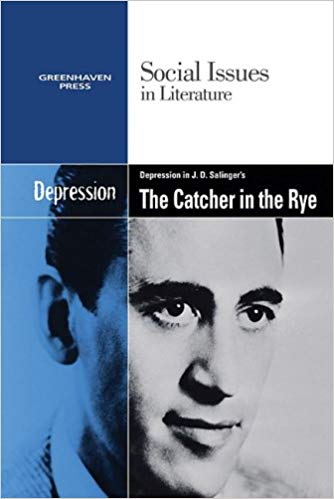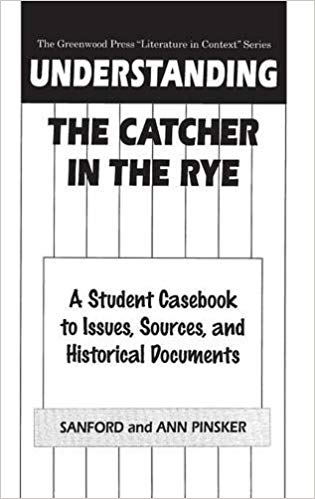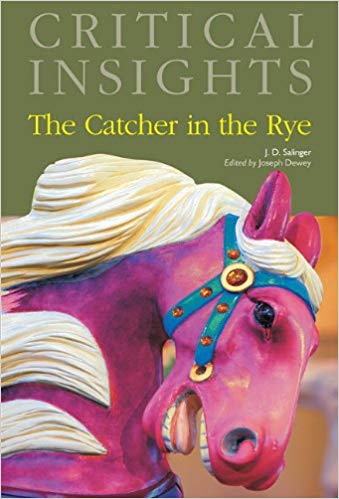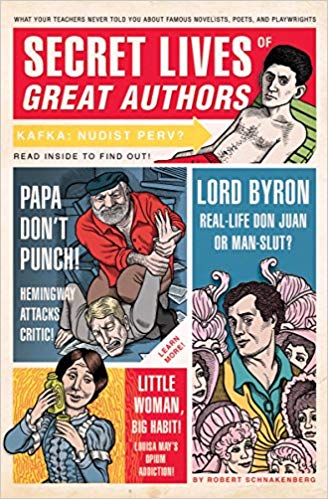The Catcher in the Rye
|
|
Enduring Understandings
- The environment, education and experiences of an individual impact a person’s perception of society.
- We use language to acknowledge, commemorate and confront the events and experiences that move us from childhood to adulthood.
- To grow as a person one must move from ignorance to knowledge, from innocence to experience, and from youth to adulthood.
- One’s past experiences help shape one’s outlook on life, and one’s outlook on life influences one’s interpretation of literature.
- “Bildungsroman” is a genre of literature that relates the “coming of age” experience and illustrates the shift of consciousness young adults undergo when they search for answers and their place in society.
- The intended audience of a text determines the language and style used by the author.
Students will
- Analyze and evaluate the manner in which authors use tone, diction, style, voice, and syntax to convey emotions of youthful characters and narrators
- Create and evaluate different forms of narrative structure
- Identify and discuss symbols, motifs, and figurative language as a means for authors to extend their meaning and purpose.
- Perform a close reading of the text using a Marxist lens to identify the critique of power and class distinction within a text.
- Compare and evaluate how multiple texts depict “coming of age”
Research Activities
- Research culture of the late 1940s-1950s.
- Research Salinger’s life and parallels to Holden (biographical lens)
- Close reading of Holden’s interactions with others using a Marxist lens to analyze class distinctions
- Reading and discussion of critical essays on Holden Caulfield from Harold Bloom’s Holden Caulfield: Major Literary Characters
Books
Historical Lens
This approach focuses on connection of the work to the historical period in which it was written; literary historians attempt to connect the historical background of the work to specific aspects of the work.
Typical Questions:
Typical Questions:
- How does the work reflect the time in which it was written?
- How accurately does the story depict the time in which it is set?
- What literary or historical influences helped to shape the form and content of the work?
- How does the story reflect the attitudes and beliefs of the time in which it was written or set? (Think beliefs and attitudes related to race, religion, politics, gender, society, philosophy, etc.)
- What other literary works may have influenced the writer?
- What historical events or movements might have influenced this writer?
- How would characters and events in this story have been viewed by the writer’s contemporaries?
- Does the story reveal or contradict the prevailing values of the time in which it was written? Does it provide an opposing view of the period’s prevailing values?
- How important is it the historical context (the work’s and the reader’s) to interpreting the work?
Contextual Research
including literary and historical allusions
|
1950s boys boarding schools/social class
Being a Teen in the 1950s:
LGBTQ in the 1950s Mental Health treatment and facilities in the 1950s Post War America Segregation of the 1950s Pop Culture: |
|
|
JD Salinger
|
Biographical Lens
This approach focuses on connection of work to author’s personal experiences. Typical Questions:
|
|
Marxist Lens
Based on the theories of Karl Marx, this school concerns itself with class differences, economic and otherwise, as well as the implications and complications of the capitalist system: "Marxism attempts to reveal the ways in which our socioeconomic system is the ultimate source of our experience" (Tyson 277). Theorists working in the Marxist tradition, therefore, are interested in answering the overarching question, whom does it [the work, the effort, the policy, the road, etc.] benefit? The elite? The middle class? Marxists critics are also interested in how the lower or working classes are oppressed - in everyday life and in literature.
Typical questions:
Typical questions:
- Whom does it benefit if the work or effort is accepted/successful/believed, etc.?
- What is the social class of the author?
- Which class does the work claim to represent?
- What values does it reinforce?
- What values does it subvert?
- What conflict can be seen between the values the work champions and those it portrays?
- What social classes do the characters represent?
- How do characters from different classes interact or conflict?
Assessment
- Literary analysis of The Catcher in the Rye
- Short research paper on J.D. Salinger
- Compare/contrast how “coming of age” in presented in The Catcher in the Rye and A Separate Peace






